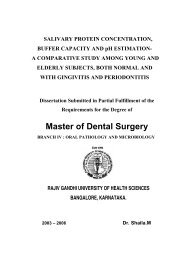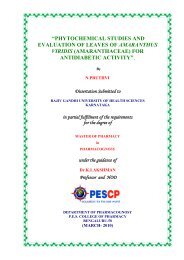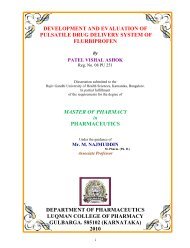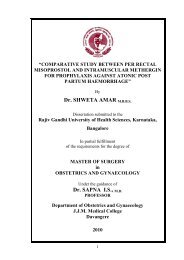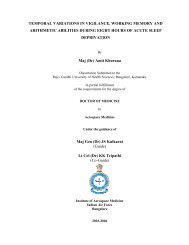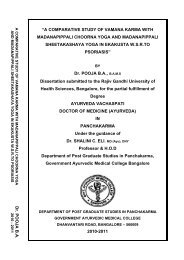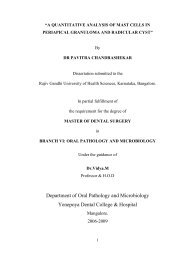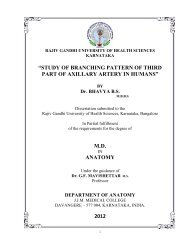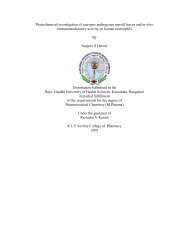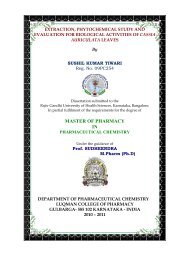Kalabhavi Srinivas K.pdf
Kalabhavi Srinivas K.pdf
Kalabhavi Srinivas K.pdf
You also want an ePaper? Increase the reach of your titles
YUMPU automatically turns print PDFs into web optimized ePapers that Google loves.
I. Primary or congenital UPJ obstruction:<br />
1. Intrinsic causes:<br />
Congenital obstruction most often results from intrinsic disease.<br />
Proforma<br />
a. A frequently found defect is the presence of an aperistaltic segment of the ureter.<br />
In these cases, histopathologic studies reveal that the spiral musculature normally<br />
present has been replaced by abnormal longitudinal muscle bundles or fibrous<br />
tissue 13 . Further work has shown that the expression of transforming growth<br />
factor β (TGF-β) is increased in the pelvis of partially obstructed kidneys 14 .<br />
This results in failure to develop a normal peristaltic wave for propagation of<br />
urine from the renal pelvis to the ureter. Such ureter may appear grossly normal<br />
at the time of surgery, and in fact, may often be calibrated to No.14 Fr or greater.<br />
b. A less frequent intrinsic cause of congenital UPJ obstruction is true ureteral<br />
stricture. These are most frequently found at the UPJ, although they may be<br />
located at sites anywhere along the ureter. Electron microscopy has demonstrated<br />
excessive collagen deposition at the site of the stricture.<br />
c. Other causes of intrinsic UPJ obstructions include,<br />
Valvular mucosal folds (kinks or valves).<br />
Persistent fetal convolutions.<br />
Upper ureteral polyps.<br />
High insertion of ureter.



